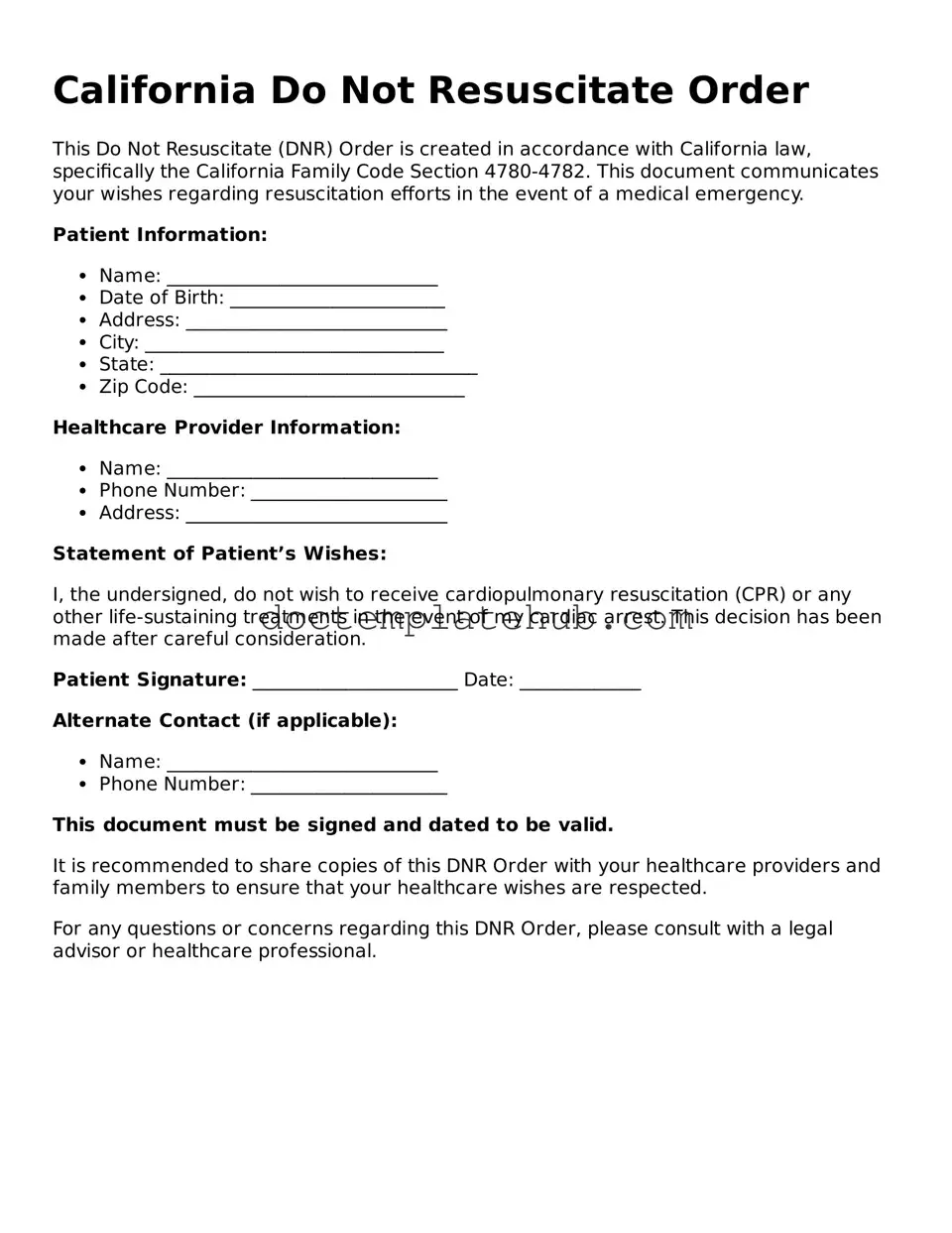What is a Do Not Resuscitate (DNR) Order in California?
A Do Not Resuscitate Order is a legal document that allows individuals to refuse cardiopulmonary resuscitation (CPR) and other life-saving measures in the event of cardiac arrest or respiratory failure. In California, this order is intended for patients who wish to avoid aggressive medical interventions at the end of life.
Who can request a DNR Order?
In California, a DNR Order can be requested by adults who are capable of making their own medical decisions. This includes individuals who are diagnosed with a terminal illness or have a medical condition that significantly limits their life expectancy. Additionally, a legally authorized representative, such as a healthcare proxy, may also request a DNR on behalf of an incapacitated person.
How do I obtain a DNR Order in California?
To obtain a DNR Order, you must fill out the California Do Not Resuscitate form. This form can typically be acquired through healthcare providers, hospitals, or online resources. After completing the form, it must be signed by both the patient and their physician to be valid. It is crucial to keep the signed form in a location that is easily accessible to emergency medical personnel.
What should I do with the DNR Order once it is completed?
Once the DNR Order is completed and signed, it is important to keep it in a visible place, such as on the refrigerator or in a medical file. Inform family members, friends, and healthcare providers about the existence of the DNR Order. This ensures that everyone involved in your care understands your wishes regarding resuscitation.
Can a DNR Order be revoked?
Yes, a DNR Order can be revoked at any time by the individual who created it. This can be done verbally or by destroying the original document. It is advisable to inform healthcare providers and family members of the revocation to prevent any confusion during medical emergencies.
Will a DNR Order affect other medical treatments?
A DNR Order specifically addresses resuscitation efforts and does not affect other medical treatments. Patients can still receive necessary medical care, including pain management and other supportive treatments, even if they have a DNR Order in place. It is essential to discuss your overall treatment preferences with your healthcare team.
What happens if I do not have a DNR Order?
If you do not have a DNR Order and experience a medical emergency, healthcare providers are required to perform resuscitation efforts unless there is a clear indication of a patient's wishes otherwise. This may result in unwanted aggressive interventions, which may not align with your preferences regarding end-of-life care.
Can I change my mind about a DNR Order?
Absolutely. Individuals have the right to change their mind about a DNR Order at any time. If you decide to modify your preferences, it is essential to create a new DNR Order and communicate this change to your healthcare providers and loved ones to ensure your current wishes are respected.
